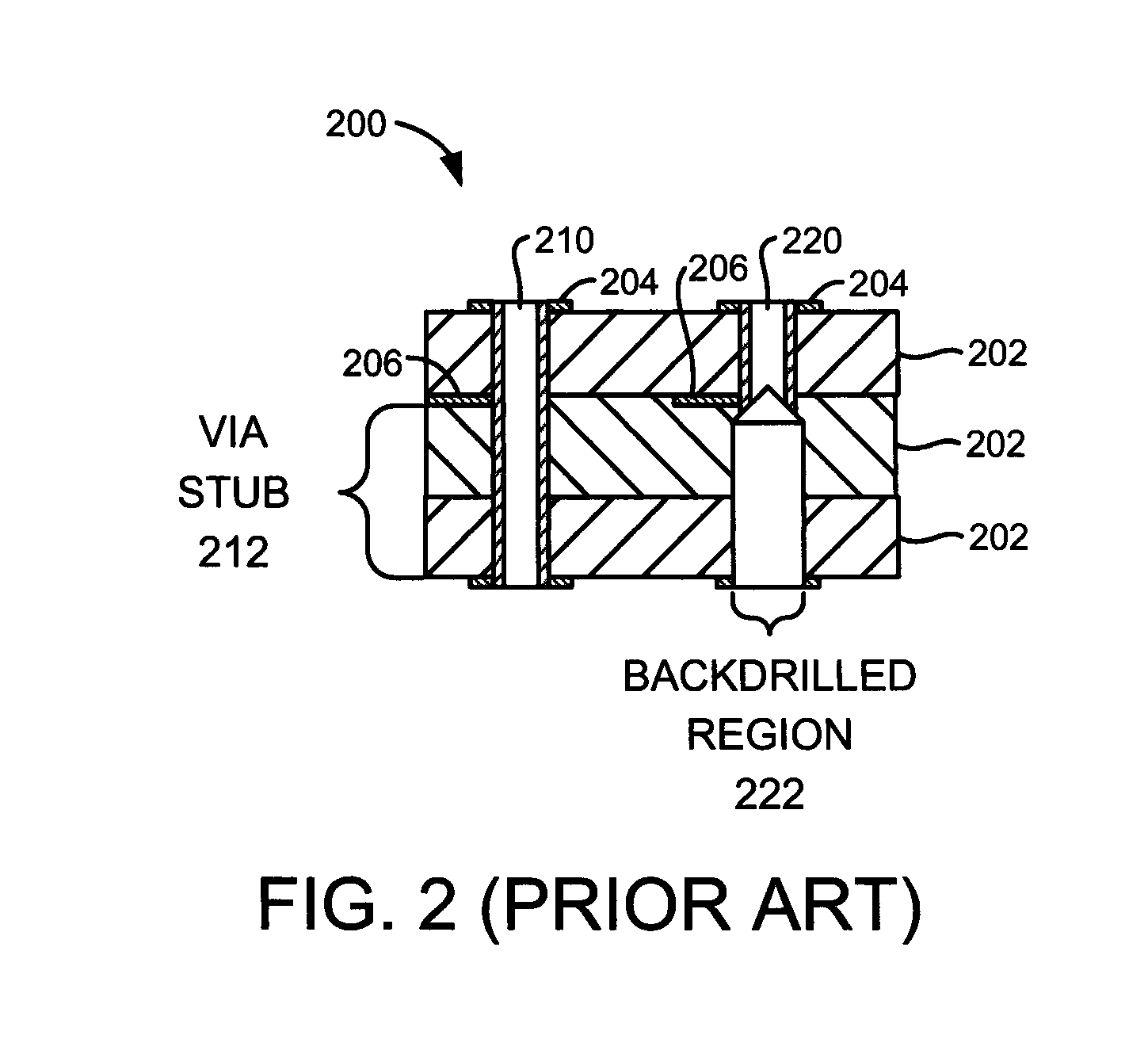Method for via stub elimination
a technology of backdrilling and vias, applied in the field of electric connectors, can solve the problems of high cost of fabricating blind vias and buried vias, time-consuming and labor-intensive backdrilling, etc., and achieve the effect of eliminating the cost and time-consuming process of backdrilling vias
- Summary
- Abstract
- Description
- Claims
- Application Information
AI Technical Summary
Benefits of technology
Problems solved by technology
Method used
Image
Examples
Embodiment Construction
[0032]1.0 Overview
[0033]In accordance with the preferred embodiments of the present invention, a substrate (e.g. a printed wiring board or other substrate, such as an interconnect substrate) includes a plurality of insulator layers and internal conductive traces. First and second through-holes extend completely through the substrate and respectively pass through first and second ones of the internal conductive traces, which are at different depths within the substrate. Photolithographic techniques are used to generate plated-through-hole (PTH) plugs of controlled, variable depth in the through-holes before first and second conductive vias are respectively plated onto the first and second through-holes. The depth of these PTH plugs is controlled to prevent the first and second conductive vias from extending substantially beyond the first and second internal conductive traces, respectively, and thereby prevent via stubs from being formed in the first place. This advantageously elimina...
PUM
| Property | Measurement | Unit |
|---|---|---|
| conductive | aaaaa | aaaaa |
| neutral density | aaaaa | aaaaa |
| power | aaaaa | aaaaa |
Abstract
Description
Claims
Application Information
 Login to View More
Login to View More - R&D
- Intellectual Property
- Life Sciences
- Materials
- Tech Scout
- Unparalleled Data Quality
- Higher Quality Content
- 60% Fewer Hallucinations
Browse by: Latest US Patents, China's latest patents, Technical Efficacy Thesaurus, Application Domain, Technology Topic, Popular Technical Reports.
© 2025 PatSnap. All rights reserved.Legal|Privacy policy|Modern Slavery Act Transparency Statement|Sitemap|About US| Contact US: help@patsnap.com



